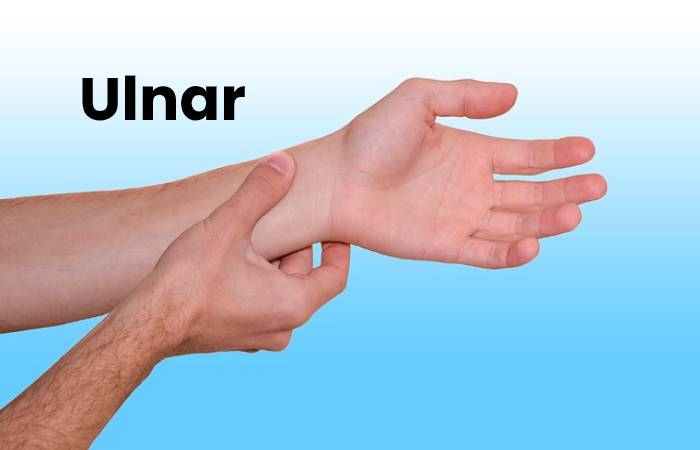Table of Contents
Definition of Pulse
In medicine, a person’s pulse is a pressure wave caused by the expansion of the arteries due to the circulation of blood pumped by the heart. It usually obtained in parts of the body where the arteries are closest to the skin, such as the wrists or neck.
Taking the Pulse
Pulse is measured manually with the index and middle fingers. When the carotid, femoral, or brachial artery palpate, one must be very careful since there is no solid surface as such to detect it. The technique involves placing the fingers near an artery and gently pressing against a firm internal structure, usually a bone, to feel the pulse.
The two fingers should use the index finger to occlude the blood passage from the proximal. And besides, you should not apply much force when taking it since it can cause circulatory, cardiac, and in some cases, brain problems. However, this also depends on which artery is palpate.
Process of Pulse

The pulse should not take with the thumb. The arteries coming from the forearm (radial and ulnar) join and form the palmar arch. From this arch come the branches that will spray the phalanges (fingers).
Each phalanx has an artery on each side, but the thumb has only one highway called the “main artery of the thumb.” which passes through its midline. If you take the pulse with the thumb, you can confuse the one you want to take with the pulse of this phalanx.
Common Pulse points
Ulnar

On the adjacent of the wrist nearby to the little finger ( ulnar artery ).
Carotid Pulse

It sought in the path of the carotid arteries, medial to the anterior border of the sternocleidomastoid muscle. In older people, it is not suitable to put too much stress on the artery or massage it, due to the risk that an atheroma plaque may come off.
Axillary Pulse
It is palpable deep in the armpit fossa, behind the posterior border of the pectoralis major muscle.
Brachial Pulse
The elbow palpates on the anterior aspect of the fold towards the medial side. It is also known as a humeral pulse.
Radial Pulse
It palpates on the wrists’ anterior and lateral aspect, between the tendon of the flexor carpi radialis muscle and the styloid process of the radius.
Femoral
It palpates under the inguinal fold towards the medial.
Popliteal
It palpates on the knees’ posterior aspect, whether the patient is in the supine or prone position. Two-hand palpation may be appropriate. It palpates on the back of the feet, lateral to the extensor tendon of the greater torte. Palpation transverse to the direction of the artery, with two or three fingers, can facilitate locating the pulse. Posterior tibial pulse Palpated behind the internal malleoli of each ankle.
Temporal
We located on the temple directly in front of the ear.
Facial Pulse
It located at the lower edge of the ascending portion of the lower jaw or mandible ( facial artery ). The patient’s blood pressure determines the ease of palpating the pulse.
Systolic Pressure
If your systolic pressure is below 90 mmHg, the radial pulse will not be palpable. So below 80, mmHg will not be brachial. And below 60 mmHg, the carotid pulse will not be evident.
Since systolic pressure rarely drops that low, a lack of a carotid pulse usually indicates death. However, there are known cases of patients with certain wounds, illnesses, or other medical problems who lack a palpable pulse.
Heart Rate
We can say that the pulse is defined as the blood wave created by the contraction of the heart’s left ventricle and is useful for estimating the heart rate.
The regular heart rate is:
- New: Average heart rate 130 with an interval of 80-180 x.’
- One year: Average heart rate: 120 with an interval of 80-140x ‘
- Ten years: Average heart rate: 70 with a range of 50-90x.’
- Adolescents: Average heart rate: 75 with an interval of 50-90x.’
- Adults: Average heart rate: 80 with an interval of 60-100x ‘
- Elderly: Average heart rate: 70 with an interval of 60-100x ‘
Normal Ranges
When the heart rate is outside the normal ranges we have:
Tachycardia
Tachycardia is a common type of heart rhythm disorder (arrhythmia) in which the heart beats faster than usual when at rest. So treatments, such as medications, medical procedures, or surgery, can help control a fast heartbeat or address other conditions that contribute to tachycardia.
Bradycardia
Bradycardia is a drop in your regular heart rate. Usually, an adult’s heart beats 60 to 100 times per minute at rest. So if you have bradycardia, your heart beats less than 60 times per minute.
Bradycardia can be a severe problem if the heart does not pump enough oxygen-rich blood to the body. Also, in some people, however, bradycardia does not cause symptoms or complications. But implantation of a pacemaker can correct bradycardia and help the heart maintain an adequate rate.
Physical Activity and Pulse
In an individual, the pulse may vary during the day, depending on the activities. So the pulsations increase when strenuous physical activity occurs; this is because it demands a higher energy consumption. And the energy is produced based on food and oxygen. Also, the heart transports this through the pulsations and carries each cell in the body through the blood.
So it is necessary to increase the pulsations; on the contrary, when the person is resting (sleeping). The frequency can decrease considerably below the normal limits.
Also Read: What Are Respiratory Diseases? – Definition, Types Of Infections, And More

![Pulse – Definition and More - BeingNaturalHuman [2020]](https://www.beingnaturalhuman.com/wp-content/uploads/2020/08/Pulse-–-Definition-and-More-BeingNaturalHuman-2020-960x640.jpg)